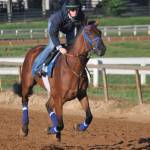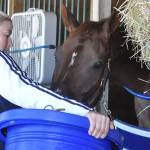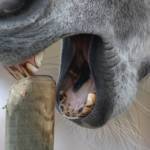Study Suggests Link Between High-Speed Training and Bone Fatigue in Racehorses

Injuries to the bones and joints are relatively common for racehorses in training. As training intensifies and mechanical stresses are repeated, various skeletal changes such as microfractures and bone remodeling can be seen in radiographs, and some horses show pain or lameness that may necessitate cutbacks in work level.
Recent research at the University of Melbourne was designed to investigate the fatigue properties of equine subchondral bone in Thoroughbred racehorses. In the study(opens new window), 23 samples of bone taken from the palmar distal aspect of the metacarpal condyles were loaded in a cyclical pattern. Four different load levels were used, with the highest load simulating the stress considered to match the tissue’s maximum physiological limit.
Cyclical loading was continued until failure occurred. Cycles to failure ranged from a low of 152 to a high of 800,000. A lower number of cycles to failure was correlated with a heavier load. Increasing limb load is associated with increased galloping speed, so this result was seen as a demonstration of high exercise speed in the development of fatigue injuries for racehorses in training. The researchers concluded, “We know that catastrophic fractures are more common when tracks are fast and when horses accumulate high-speed training over a short period. Despite almost universal recognition that joint injuries in racehorses are due to bone fatigue under repeated high loading, there have been no published studies of the fatigue behavior of the joint surface. This work will assist with developing training programs that maintain fitness but reduce the risk of injury.”








